Introduction to Range Hoods
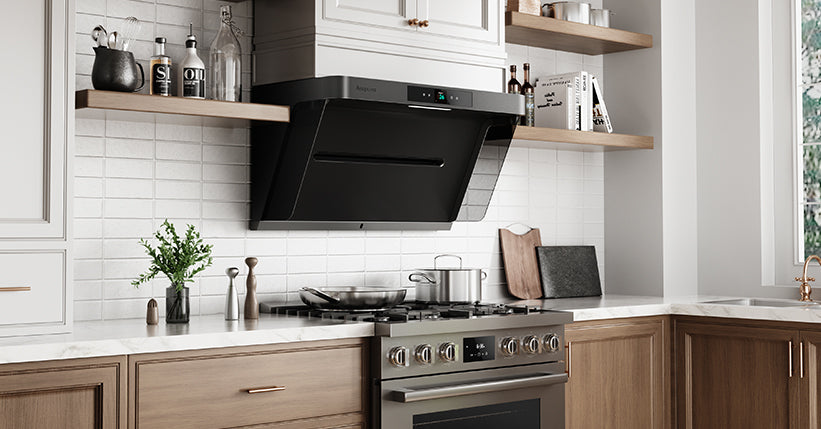
What is a Range Hood?
A range hood is a kitchen appliance installed above your cooktop to capture and remove smoke, grease, and odors during cooking. It helps maintain clean air and prevents oil buildup in your kitchen.
Arspura combine powerful suction with intelligent air purification, keeping your kitchen fresh, safe, and comfortable every day.
SHOP NOW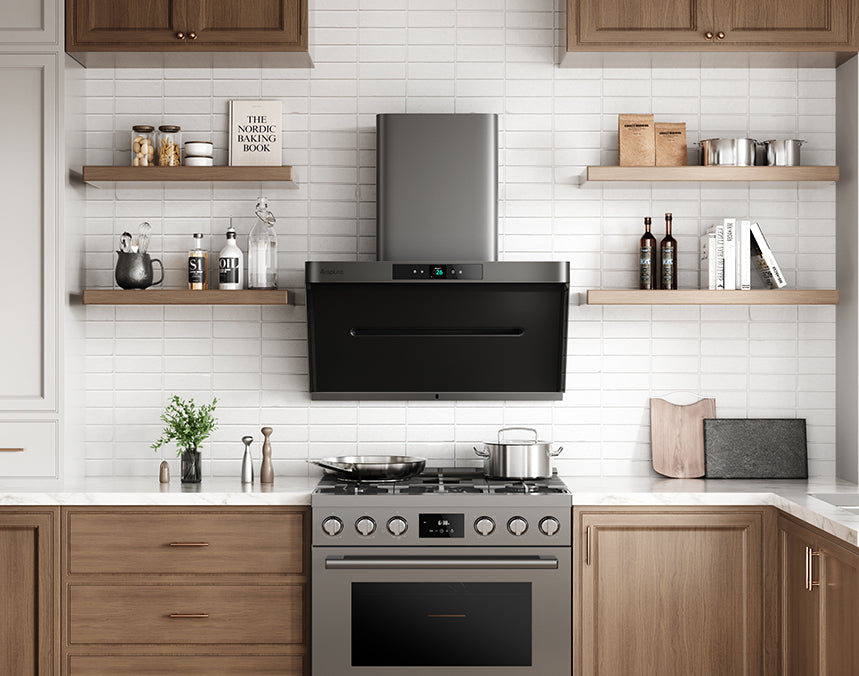
Breathe Easier, Live Cleaner
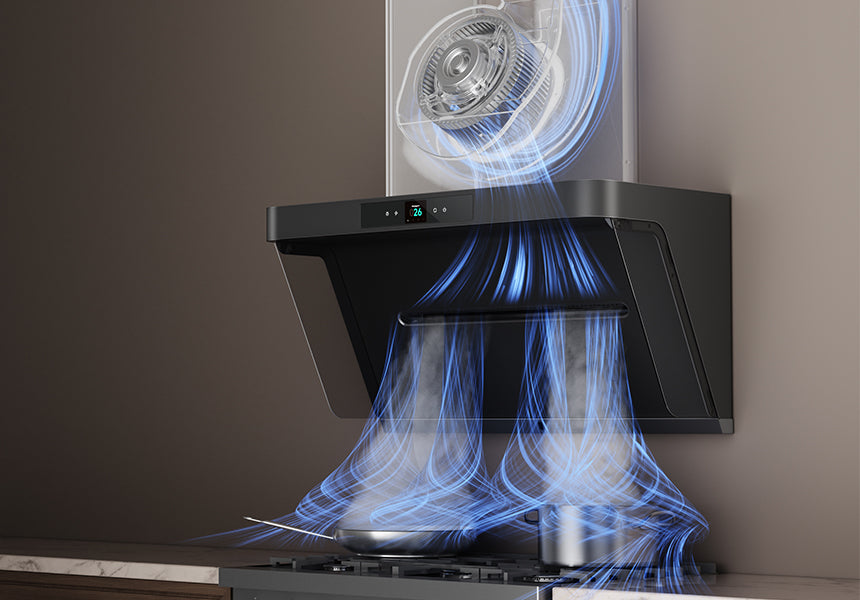
Why Is a Range Hood Essential?
A range hood is your first line of defense against smoke, grease, odors, and harmful particles generated during cooking. Whether you’re searing steaks or gently steaming vegetables, cooking releases fine particles and gases like PM2.5, nitrogen dioxide, and volatile organic compounds. These pollutants can build up quickly, making your indoor air several times more polluted than the air outside.
By capturing and venting contaminants right at the source, a quality range hood safeguards your health, protects kitchen surfaces from stubborn grease buildup, and keeps your space fresh and comfortable. Arspura's high-speed airflow and intelligent control functions allow you to enjoy efficient ventilation and modern convenience in a stylish design.
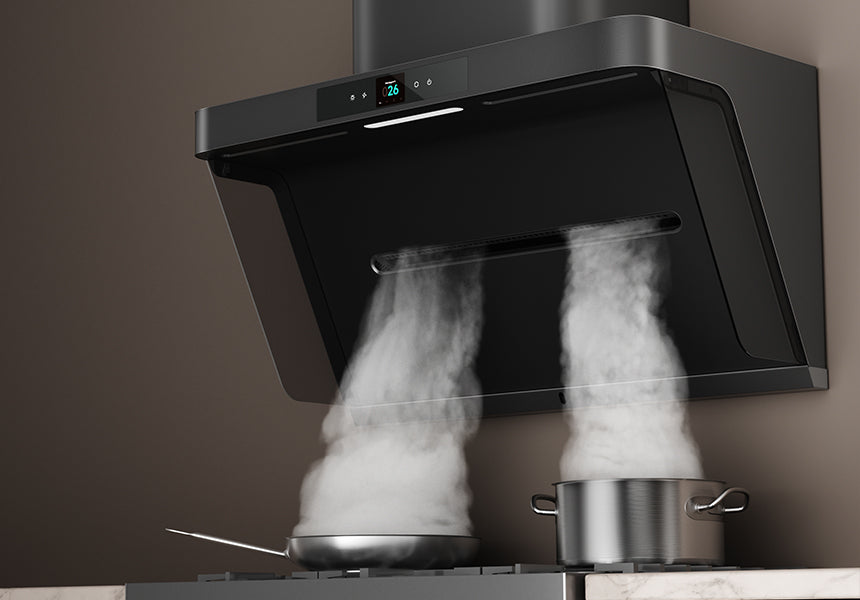
Do I Really Need a Range Hood?
Whether you cook frequently or not, we recommend using Arspura. Even if you don't cook, turning on our range hood can purify the air in your kitchen. Without proper ventilation, heat, steam, and airborne grease spread throughout your home, settling on walls, cabinets, and fabrics while leaving behind lingering odors. More importantly, cooking with gas releases pollutants, and long-term exposure may affect respiratory health.
A well-designed range hood removes these contaminants before they circulate, improving air quality and making cleanup easier. Investing in a high-performance hood means a cleaner kitchen, fresher air, and a healthier cooking environment for you and your family.
Types of Range Hoods
-

Wall-Mounted Range Hoods
Wall-mounted range hoods are installed directly on the wall above your cooktop, often in place of an overhead cabinet. They are among the most common and visually striking styles, featuring a chimney-like design that vents air outdoors through ductwork.
- Ideal for: Kitchens with no cabinets directly above the stove.
- Note: Arspura kitchen hood can be wall-mounted for a sleek, built-in look while maintaining high air velocity to quickly capture rising smoke.
-

Under-Cabinet Range Hoods
Under-cabinet range hoods are installed beneath kitchen cabinets, offering a compact and space-saving solution. They’re designed for compact spaces and provide efficient ventilation without taking up additional room.
- Best for: Compact or minimalist kitchens.
- Note: Arspura’s range hood installation design allows it to fit seamlessly under cabinets — combining flexibility and modern design.
-

Island Range Hoods
Mounted to the ceiling above a kitchen island, these hoods vent air through ductwork hidden in the ceiling. They usually feature a statement-making design.
- Ideal for: Open kitchens with island cooktops.
-

Downdraft Range Hoods
A downdraft hood pulls air downwards through vents integrated into the cooktop surface. These are less common but favored for modern, minimalist kitchens.
- Ideal for: Kitchens with limited ceiling space or open layouts that avoid overhead structures.
Key Features to Look For
When choosing a range hood, focus on what truly improves your cooking experience—strong suction, low noise, easy cleaning, and smart functions. The right features not only keep your kitchen air clean but also make everyday cooking more comfortable and effortless.



1. Measure the Cooktop Width
Your range hood should be at least as wide as your cooktop. Standard home stoves are usually 30" or 36", so choose a hood that matches or slightly exceeds that width for full smoke coverage.
2. Check the Mounting Height
Measure the distance between the stovetop and the installation surface. The ideal height is 24"–30" to ensure efficient suction and heat capture.
3. Verify Cabinet and Duct Space
If installing under cabinets, confirm there’s enough space for both the hood depth and ductwork. Arsprua’s flexible design fits comfortably in most standard layouts.
1. Consider Your Kitchen Style
Modern kitchens pair well with sleek stainless steel or matte black finishes, while traditional kitchens may favor softer, rounded shapes.
2. Match Installation Type to Space
Under-Cabinet Hoods: Best for compact kitchens where saving space is key. Wall-Mounted Hoods: Perfect for open layouts or as a statement feature.
3. Choose a Design That Complements Appliances
Ensure your hood matches your oven or cooktop in finish and form. Arspura’s clean, minimalist lines integrate easily into any design theme.
1. Ducted Range Hoods
Vent air outdoors for stronger smoke, heat, and odor removal — ideal for heavy or frequent cooking.
2. Ductless Range Hoods
Use filters to recirculate air back into the kitchen. Easier to install, but less effective for serious cooking.
3. Why Arspura Uses a Ducted Design
Arspura hoods are ducted systems engineered for high-speed airflow and consistent ventilation, ensuring cleaner indoor air and fresher cooking environments every day.
Arspura P1 Installation Dimensions
Not Sure If You Can Install?
Installation Considerations

Do-It-Yourself vs Professional Installation
Installing a range hood can be done in two ways, and the best option depends on your skills, tools, and kitchen setup.
- DIY Installation:
This option is more cost-effective, as it saves on labor fees. It works best for users who have basic electrical knowledge, proper tools, and an existing duct system. However, it can be time-consuming and requires careful attention to measurements, wiring, and sealing to ensure proper ventilation.
- Professional Installation:
Although it comes at a higher upfront cost, this is the easier and safer option for most homeowners. Professionals can handle complex ductwork, electrical connections, and wall or ceiling mounting with precision.
Arspura’s certified installation service guarantees secure setup, optimal airflow, and long-term reliability—making it a smart investment for hassle-free performance.

Space Requirements
To ensure a perfect fit and optimal performance, follow these installation dimensions for the Arspura P1 range hood:
Height from stove to ceiling: at least 54–58 inches (1370–1470 mm)
Cabinet depth allowance: greater than 12.8 inches (326 mm)
Decorative cover width: more than 16.7 inches (425 mm)
Chassis width allowance: over 35.4 inches (900 mm)
Distance from stove to hood top: between 27.2–29.1 inches (690–740 mm)
Distance from stove to mounting plate (for drilling): 46.3–48.2 inches (1175–1225 mm)
These measurements provide enough clearance for safe heat dissipation, efficient smoke capture, and smooth duct installation. Always confirm ceiling and cabinet depth before drilling.

Venting & Ductwork
Proper ducting is crucial for efficient ventilation. Always ensure your ducts are:
Straight and short: Minimize bends to maintain airflow speed.
Tightly sealed: Prevent air leaks that reduce suction power.
Correctly sized: Match the Arspura hood’s Ø160 mm outlet diameter for maximum efficiency.
Arspura’s ducted design expels smoke, grease, and heat directly outdoors, maintaining cleaner indoor air and stronger suction performance. With proper duct installation, you’ll experience the full power of Arspura’s high-velocity airflow system and long-lasting performance.
Other Considerations
Maintenance & Care
Proper maintenance keeps your range hood performing at its best. Arspura makes this process simple and effortless.
Cleaning and Replacing Filters:
Traditional range hoods require frequent filter removal and deep cleaning. Arspura eliminates this hassle with a filter-free design—no greasy mesh or baffle filters to scrub or replace. The intelligent self-cleaning system uses high-speed centrifugal force to remove oil buildup from the fan blades, keeping the motor clean and powerful over time.
General Maintenance Tips:
Arspura’s easy-clean back panel allows you to maintain the exterior with just a light wipe—no disassembly needed. To keep airflow optimal, check that the duct remains unobstructed and clean the hood surface regularly. With its maintenance-free structure, Arspura ensures your kitchen stays fresh and your hood stays efficient with minimal effort.
Energy Efficiency and Sustainability
Modern range hoods are designed not only for performance but also for energy conservation and environmental responsibility. Arspura’s engineering focuses on achieving both.
Energy Consumption of Range Hoods:
Range hoods typically consume moderate power, but efficiency varies based on motor design and operation time. Arspura utilizes a high-efficiency BLDC motor that delivers strong suction with reduced energy use, allowing continuous operation during heavy cooking without driving up electricity costs. To optimize efficiency, users can run the hood at lower speeds for light cooking and use the delay shut-off function to automatically stop operation after ventilation is complete.
Eco-Friendly Features:
CleaDeep’s filter-free design eliminates the need for disposable filters and chemical cleaners, significantly reducing waste and long-term maintenance costs. Its self-cleaning technology extends product lifespan, while the durable metal housing ensures recyclability and fewer material replacements over time. Together, these features reflect Arspura’s commitment to sustainability—providing cleaner air for your kitchen and a smaller footprint for the planet.
Pricing Guide
Choosing a range hood is an investment in both kitchen performance and long-term comfort. Prices vary widely depending on design, materials, and advanced technology.
Budget Range:
Basic under-cabinet or ductless range hoods are typically the most affordable, focusing on simple smoke removal with limited suction power. Mid-range wall-mounted models offer better airflow and design flexibility, ideal for everyday cooking needs.
Premium ducted hoods like Arspura’s IQV Range Hood integrate intelligent cleaning systems, real-time air monitoring, and durable materials, delivering both high performance and long-lasting value.
Factors That Impact Price:
Several elements influence a range hood’s cost: motor efficiency, airflow performance, noise control, and materials such as stainless steel or tempered glass. Smart features like auto-cleaning, PM2.5 monitoring, or gas leak detection can also elevate pricing, but they greatly enhance safety and ease of use. Arspura combines these premium innovations into one intelligent system, offering professional-grade ventilation at a competitive value point. It is an investment that pays off in cleaner air and lasting quality.
FAQ
How Often Should I Run My Range Hood When Cooking?
Turn on your range hood a few minutes before cooking to establish airflow, and keep it running for 5-10 minutes afterward to clear any lingering smoke or odors. This helps maintain better air quality throughout your kitchen.
Can A Range Hood Improve Indoor Air Quality?
Absolutely. A good ventilation system removes smoke, grease, and airborne pollutants. Arspura models include PM2.5 sensors or gas leak alarms for added safety, helping maintain a healthier kitchen environment.
How Long Does A Range Hood Usually Last?
A quality range hood can last 10–15 years with regular maintenance. Investing in durable materials, like stainless steel and sealed motors, helps extend its lifespan.
What Materials Are Best for a Long-Lasting Range Hood?
High-quality stainless steel is the most durable and corrosion-resistant choice. It withstands heat, grease, and humidity while being easy to clean—ideal for both home and commercial kitchens.
What Should I Do If My Range Hood's Suction Seems Weaker Over Time?
Reduced airflow is often caused by blocked ducts, dirty filters, or grease buildup. Check and clean your filters, inspect the duct for leaks or obstructions, and ensure the vent cap outside is clear.
How Do I Know If My Range Hood Is Working Effectively?
Signs of proper performance include strong upward airflow, clear suction during cooking, and no lingering odor afterward. If smoke lingers or you notice reduced suction, check for duct blockages or grease buildup.
Can I Use My Range Hood While Running Air Conditioning Or Heating?
Yes. Running both is fine as long as your kitchen has good air balance. Ducted hoods exhaust air outside, so it’s best to ensure there’s a small air gap or window slightly open to maintain airflow efficiency.
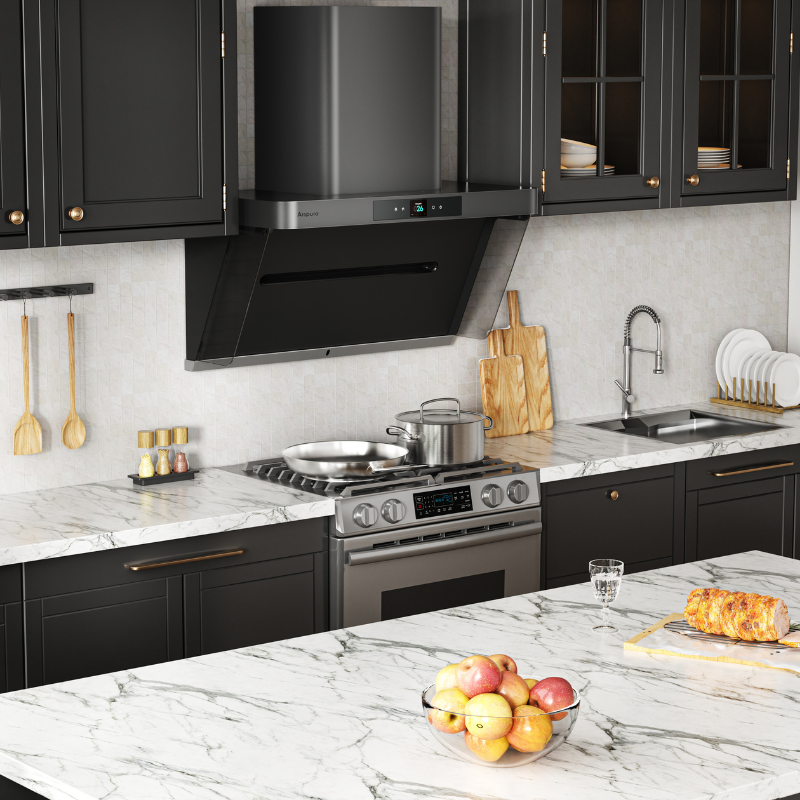








 Steady Suction Power
Steady Suction Power
 Flexible Installation
Flexible Installation
 Smoke Gone in 0.03
Smoke Gone in 0.03
 Easy Maintenance
Easy Maintenance
 Ultra-Quiet Operation
Ultra-Quiet Operation
 Intelligent Protection
Intelligent Protection



